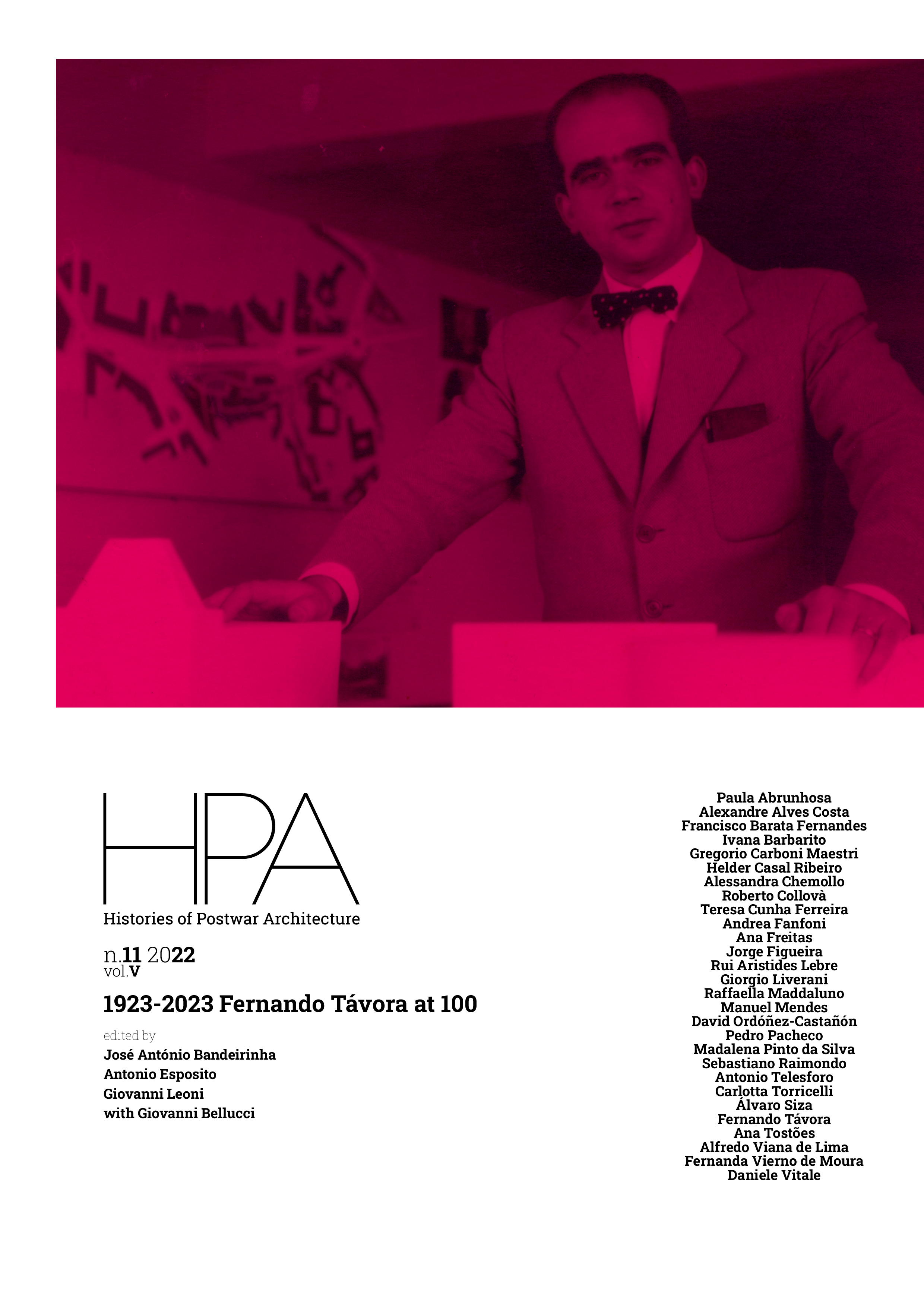Designing with History: Intervention in Preexisting Buildings by Fernando Távora at the Dawn of the Third Way (1945-1962)
DOI:
https://doi.org/10.6092/issn.2611-0075/16269Keywords:
Fernando Távora, Portuguese Architecture, Adaptive Reuse, Heritage Buildings, Architectural DesignAbstract
The period between 1945 and 1962 was extraordinarily productive for Fernando Távora, both in terms of theoretical reflection and architectural production. It is marked by the formulation and progressive practical implementation of the so-called third way. Despite the numerous studies on Távora’s role in the Portuguese architectural scene during this period, the genesis of his thought and first experiences of architectural heritage intervention have not been thoroughly explored. Therefore, this paper aims to investigate a set of built and unbuilt works that were overlooked by previous publications, providing new perspectives on his early professional stages: Casa de Carapeços (1948), Casa das Fidalgas (1948-54), Casa da Foz (Távora’s own house, 1954), Casa de Além (1956), the project for the Convento de Monchique (1957), and the renovation of the Casa da Igreja (1958-61). These lesser-known seminal designs illustrate the evolution of the new design principles and methodological guidelines that were matured and enhanced in subsequent renovation works, which gained greater attention and pedagogical value. These works also reveal the influence of other contemporary architects, echo the theories of relevant philosophers and demonstrate an attempt to apply the concepts articulated in Fernando Távora’s own essays.
Downloads
Downloads
Published
How to Cite
Issue
Section
License
Copyright (c) 2022 David Ordóñez-Castañón, Teresa Cunha Ferreira

This work is licensed under a Creative Commons Attribution 4.0 International License.





